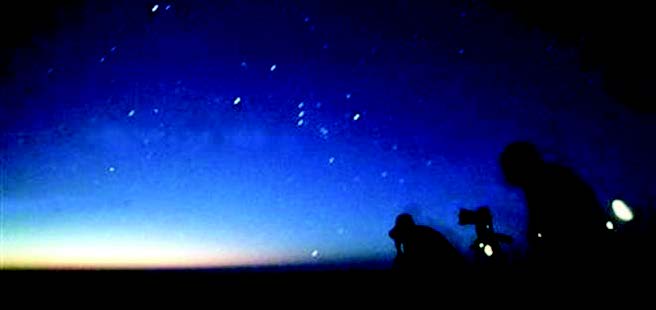
Scientists have discovered two extremely hot and big stars locked in a death dance with a dramatic and violent end the only way out. They found the strange pair in the Tarantula Nebula, some 160,000 light years away.
The international team of scientists used the Very Large Telescope (VLT) located in Chile’s Atacama Desert to find this pair.
The VLT is managed by the multi-government European Southern Observatory (ESO) headquartered near Munich, Germany.
The two star system, called VFTS 352, is composed of two very hot, bright and massive stars that orbit each other in little more than a day. The centres of the stars are separated by just 12 million kilometers and their surfaces have started overlapping. The combined mass of the pair is about 57 times that of the Sun and its surface temperatures are above 40 000 degrees Celsius. This makes it the biggest and hottest ‘overcontact’ double star systems found.
Such a system is very rare because this phase in the life of the stars is short, making it difficult to catch them in the act. Because the stars are so close together, astronomers think that strong tidal forces lead to enhanced mixing of the material in the stellar interiors.
“The VFTS 352 is the best case yet found for a hot and massive double star that may show this kind of internal mixing,” explains lead author Leonardo A. Almeida of the University of Sao Paulo, Brazil. “As such it’s a fascinating and important discovery.”
Astronomers predict that VFTS 352 will face a cataclysmic fate in one of two ways. The first potential outcome is the merging of the two stars, which would likely produce a rapidly rotating, and possibly magnetic, gigantic single star. “If it keeps spinning rapidly it might end its life in one of the most energetic explosions in the Universe, known as a long-duration gamma-ray burst,” says the lead scientist of the project, Hugues Sana, of the University of Leuven in Belgium.
The second possibility is explained by the lead theoretical astrophysicist in the team, Selma de Mink of University of Amsterdam: “If the stars are mixed well enough, they both remain compact and the VFTS 352 system may avoid merging. The components would likely end their lives in supernova explosions, forming a close binary system of black holes. Such a remarkable object would be an intense source of gravitational waves.”
But, regardless of how VFTS 352 meets its demise, this system has already provided astronomers with valuable new insights into the poorly understood evolutionary processes of massive overcontact binary star systems.





Be the first to comment